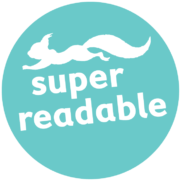 When working with secondary schools to set up book clubs (see Book Clubs in Schools), a recurring theme is the number of children who come into Year 7 with reading levels significantly below those expected for their age. This may because they have dyslexia or other specific learning disabilities (which may or may not have been diagnosed). Some will have had other challenges in their lives that have affected their education, or some will have attended a primary school that has just not been that effective in teaching core literacy skills. Clearly supporting these children to develop their reading skills is a priority so that they can access the secondary curriculum. Secondaries generally pick up on these pupils early and have a range of interventions and support to draw on.
When working with secondary schools to set up book clubs (see Book Clubs in Schools), a recurring theme is the number of children who come into Year 7 with reading levels significantly below those expected for their age. This may because they have dyslexia or other specific learning disabilities (which may or may not have been diagnosed). Some will have had other challenges in their lives that have affected their education, or some will have attended a primary school that has just not been that effective in teaching core literacy skills. Clearly supporting these children to develop their reading skills is a priority so that they can access the secondary curriculum. Secondaries generally pick up on these pupils early and have a range of interventions and support to draw on.
Catching up with their functional literacy is the main focus for these students, but just as important for their longer term success is that they start to read for pleasure. What they have in common is that none of these children see themselves as a reader and wouldn’t chose to read. Finding books that work for these children is so important, but also really tricky. Starting secondary school accentuates a desire to fit in – they don’t want to read primary age books or ‘special’ books and they want age appropriate content.
For these pupils, I am a superfan of the Barrington Stoke ‘super readable’ books aimed at teen and YA readers but with lower reading levels. Although short, these ‘hi, lo’ books are satisfying and full stories and don’t patronise the reader. They are regularly shortlisted for awards and Lark by Anthony McGowan won the 2020 CILIP Carnegie Medal. They cover a range of genres and cater for diverse interests. By working with established authors, the books allow children to fit in with what their peers with stronger reading skills may be reading. These authors also have a strong backlist of books which, as developing readers gain confidence, provides a pathway to go on if they feel more able to tackle a longer book. Barrington Stoke have designed their own dyslexia friendly font and print on tinted paper. Most books have with some illustrations and all are very clearly laid out. These specialist features – like many measures to support additional needs – make reading easier for everyone, not just dyslexics.
I have heard a couple of the authors talking about writing for this format and how it stretched their writing abilities in different ways. It takes real skill to tell a complete and compelling story in fewer and more simple words. I have done reviews of a number of their books that can be found here. Barrington Stoke’s own website can be accessed here which includes a number of resources linked to the books.
Buy Barrington Stoke books on Bookshop.org

